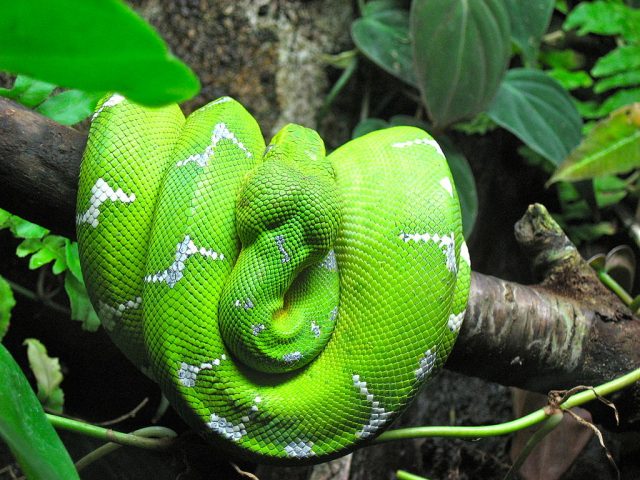Type the name of the breed you're looking for below
[wpdreams_ajaxsearchlite] Don't see the breed your're looking for? Click here and let us know!
Emerald Tree Boa
| Place of Origin and Range | A native Species in tropical South America. |
| Description | Newborn Emerald Tree Boas are a brick red colour or yellow. This juvenile colouration is lost after the first shed. Dorsal colouration of adults is deep emerald green, with yellow below extending from the bottom onto the face and lips in some cases with variations in colour(usually white) on the dorsal bars crossing the emerald green. |
| Morph Patterns Available | Yes |
| Adult Size | Can grow 6-7 feet(1.8- 2.1m) |
| Accommodation | A well ventilated rain forest terrarium with lots of branches as thick as the snakes diameter for climbing with typical rainforest settings. High humidity 60-80%, and a large dish for bathing and soaking in to improve shedding. |
| Lifespan | Can live 12 - 20 years |
| Feeding / Diet | Like most snakes, an Emerald tree boa can eat ,mice, rats, chicks, and rabbits. All depending on the availability of feed and the size of your snake. Some tree snakes will also eat tree frogs and lizards. |
| Breeding | Being ovoviviparous, with females producing an average of between 6 and 14 young at a time, sometimes even more. Litters exceeding these numbers are extremely rare. Newly born juveniles have a distinctive brick-red to orange colouration and gradually go through an ontogenetic colour change over a period of 12 months, gradually turning to full emerald green. |
| Other Considerations | The Emerald tree boa is not known for its pleasant nature. With this snake in particular regurgitation seems to be a common problem. Possible causes may be inappropriate cage temperatures, stress, parasitism, and oversized meals. Snakes are relatively hardy low maintenance animals when kept in the correct environment, and require little day to day care other than feeding and cleaning out the tank as required. However, like all animals, they can still become sick or injured despite our best intentions to prevent this. |



